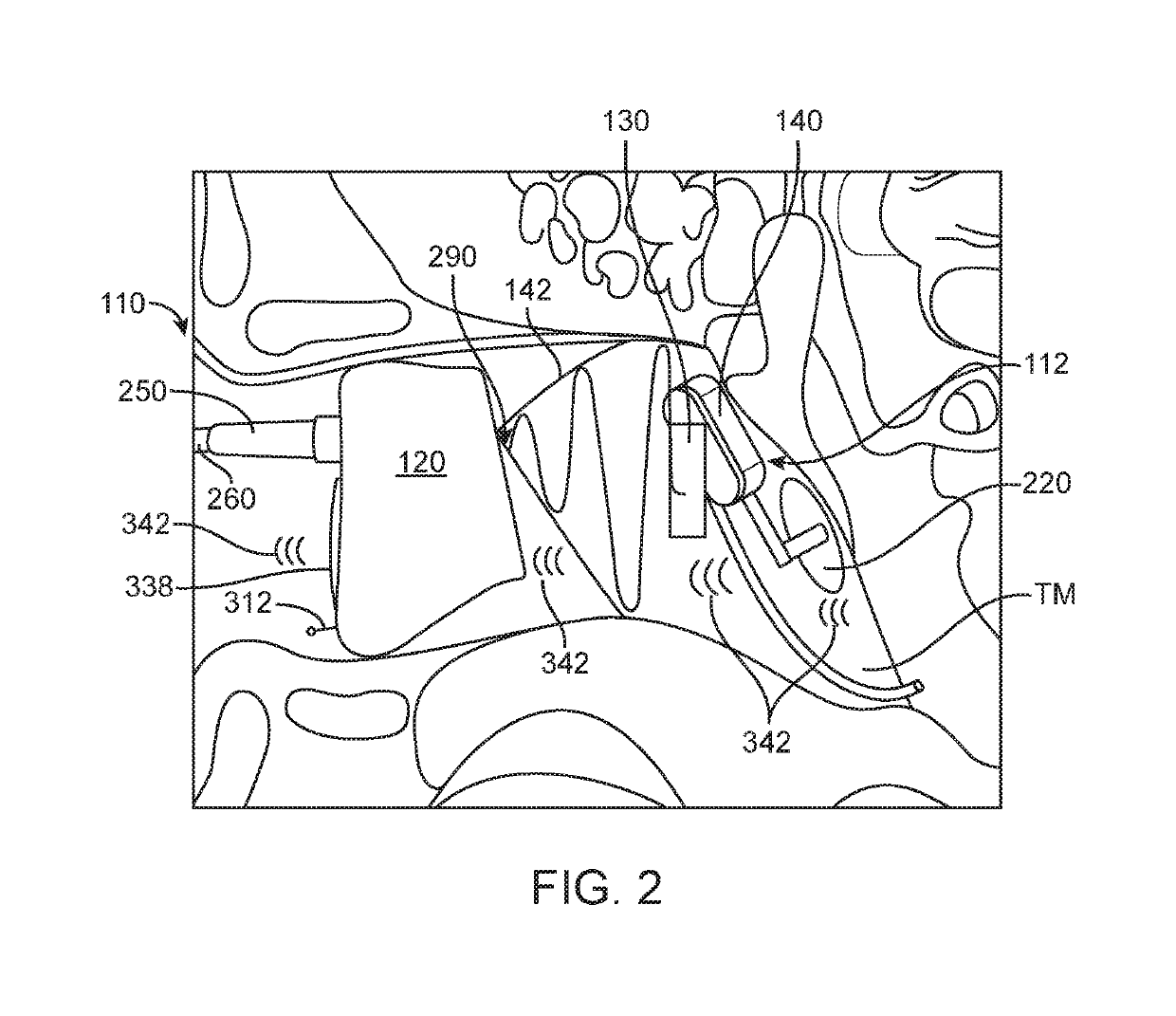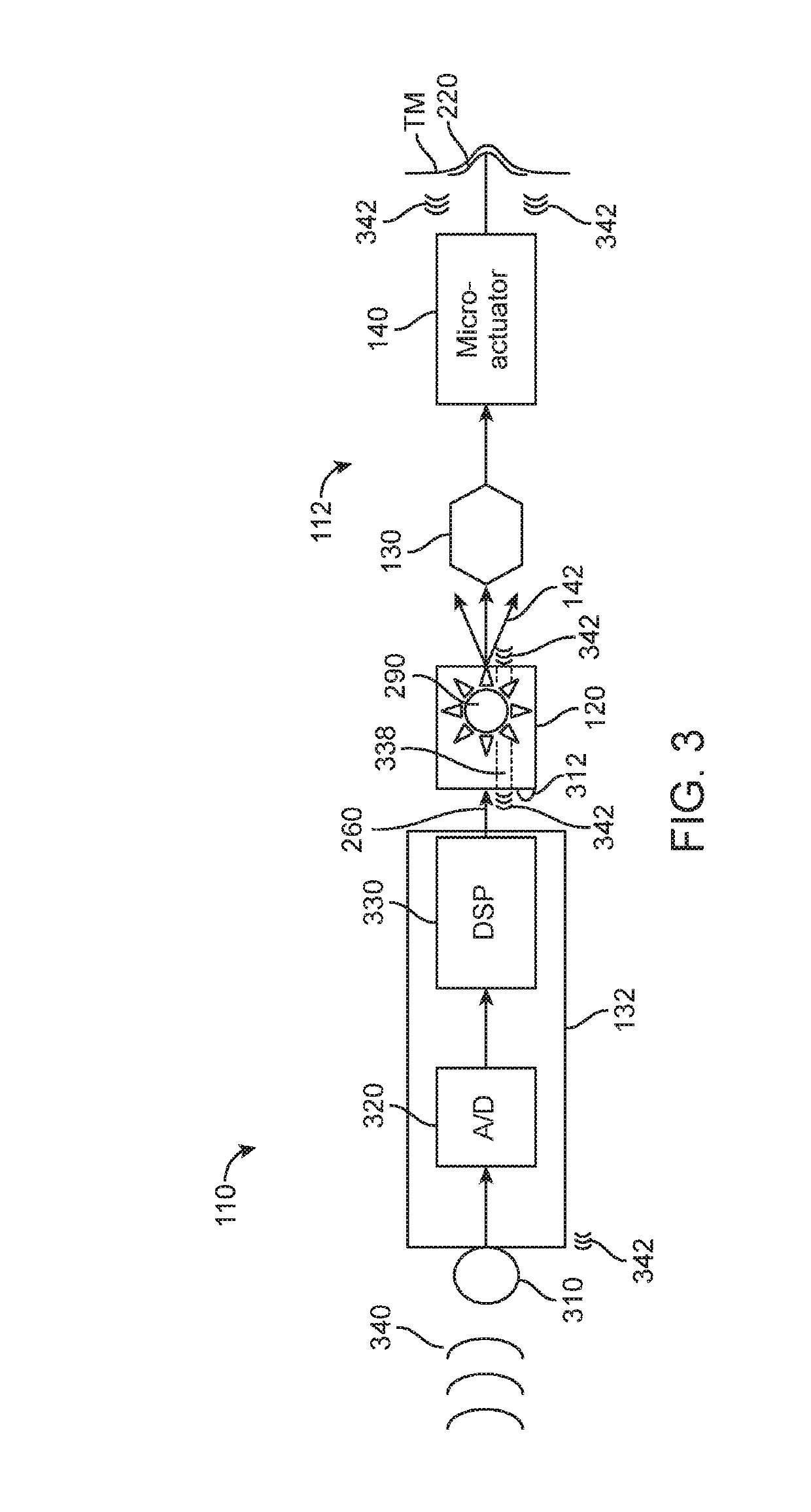Interactive hearing aid error detection
a technology of error detection and hearing aids, applied in the field of hearing aids and hearing aid systems, can solve the problems of compromising insufficient sound volume, patient discomfort, etc., and achieve the effect of optimizing the performance of hearing aids, and optimizing the performance of hearing aid systems
- Summary
- Abstract
- Description
- Claims
- Application Information
AI Technical Summary
Benefits of technology
Problems solved by technology
Method used
Image
Examples
Embodiment Construction
Definitions
[0017]Audio Processor (BTE)—A system for receiving and processing audio signals. In embodiments of the invention, audio processors may include one or more microphones adapted to receive audio which reaches the user's ear. In embodiments of the invention, the audio processor may include one or more components for processing the received sound. In embodiments of the invention, the audio processor may include digital signal processing electronics and software which are adapted to process the received sound. In embodiments of the invention, processing of the received sound may include amplification of the received sound.
[0018]Contact Hearing System—A system including a contact hearing device, an ear tip and an audio processor. In embodiments of the invention, contact hearing systems may also include an external communication device. An example of such system is the Earlens light driven hearing-aid, available from the Earlens Corporation, which transmits audio signal by laser ...
PUM
 Login to View More
Login to View More Abstract
Description
Claims
Application Information
 Login to View More
Login to View More - R&D
- Intellectual Property
- Life Sciences
- Materials
- Tech Scout
- Unparalleled Data Quality
- Higher Quality Content
- 60% Fewer Hallucinations
Browse by: Latest US Patents, China's latest patents, Technical Efficacy Thesaurus, Application Domain, Technology Topic, Popular Technical Reports.
© 2025 PatSnap. All rights reserved.Legal|Privacy policy|Modern Slavery Act Transparency Statement|Sitemap|About US| Contact US: help@patsnap.com



